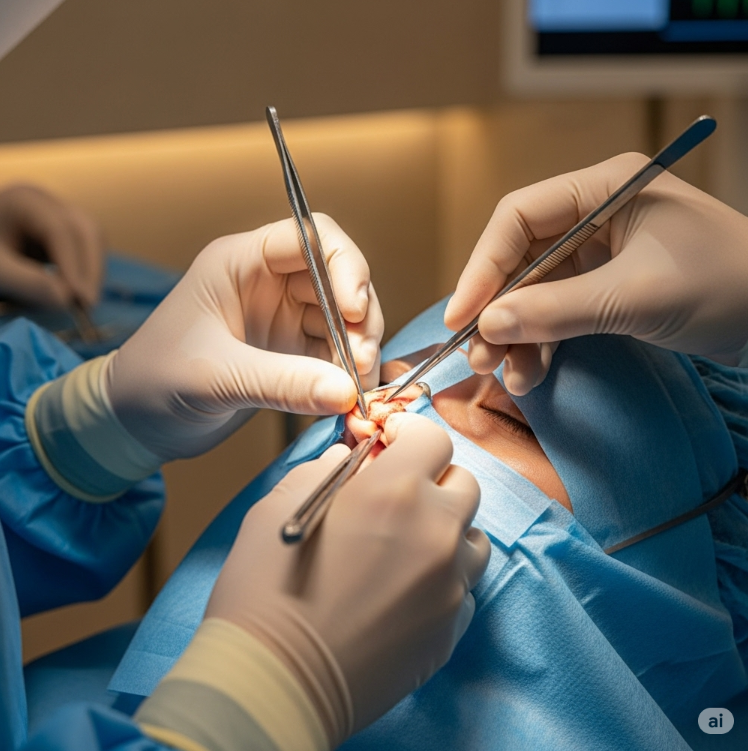Treatment Overview
Augmentation ethnic rhinoplasty is a specialized surgical procedure designed to enhance nasal height, definition, and projection in patients of diverse ethnic backgrounds, such as Asian, African, and Middle Eastern individuals. Many patients from these groups naturally have a lower nasal bridge, broad tip, or wider nostrils, and augmentation rhinoplasty addresses these concerns while maintaining ethnic identity.
In Korea, augmentation rhinoplasty has become one of the most sought-after procedures due to the country’s world-class surgical expertise, advanced grafting methods, and ability to achieve natural results tailored to individual ethnic features. Korean surgeons specialize in balancing enhancement with cultural preservation, ensuring the nose complements the patient’s overall facial harmony.
Purpose & Benefits
The main purpose of augmentation ethnic rhinoplasty is to refine and enhance the nasal structure while preserving ethnic characteristics. Key benefits include:
- Augments a flat or low nasal bridge for improved profile.
- Provides better nasal projection and definition.
- Refines a broad or bulbous nasal tip.
- Balances the nose with other facial features for a harmonious appearance.
- Preserves ethnic identity while enhancing aesthetics.
- Corrects functional issues like deviated septum or weak nasal support (if combined with functional surgery).
Ideal Candidates
Augmentation ethnic rhinoplasty in Korea is suitable for patients who:
- Belong to Asian, African, Middle Eastern, or mixed ethnic backgrounds.
- Desire increased nasal height, projection, or definition.
- Have a naturally low bridge, wide base, or undefined tip.
- Want to maintain their ethnic identity while improving nasal balance.
- Are in good overall health with realistic expectations.
Possible Risks & Complications
While the procedure is considered safe when performed by experienced surgeons, risks may include:
- Temporary swelling and bruising.
- Implant-related issues (if silicone or Gore-Tex is used).
- Graft absorption (if cartilage grafts are used).
- Infection or delayed healing.
- Rare need for revision surgery.
Surgical Techniques Used
Korean surgeons employ a variety of advanced techniques, depending on each patient’s anatomy and goals:
- Dorsal Augmentation: Using silicone, Gore-Tex, or autologous cartilage (from septum, ear, or rib) to raise and define the nasal bridge.
- Tip Grafting/Refinement: Using cartilage to reshape and project the nasal tip.
- Alar Base Reduction: Narrowing wide nostrils for proportion.
- Columella Strut Graft: Providing structural support to maintain tip projection.
- Combination of Autologous & Synthetic Implants: For stable, long-lasting results.
- Septoplasty (if needed): Correcting deviated septum while enhancing function.
Recovery & Aftercare
- Swelling & Bruising: Most visible swelling subsides within 1–2 weeks; minor swelling continues for months.
- Splint & Stitches: Splint removed in 7–10 days; stitches may be dissolvable or removed in about a week.
- Downtime: Patients can usually resume normal activities in 10–14 days.
- Final Results: Nose refines gradually over 3–6 months, with final shape stabilizing at 9–12 months.
- Aftercare in Korea: Clinics provide LED therapy, lymphatic massage, anti-swelling injections, and detailed follow-ups.
Results & Longevity
Augmentation ethnic rhinoplasty in Korea provides long-lasting, natural results that enhance nasal projection, definition, and symmetry. Results are typically stable for many years, especially when autologous cartilage is used. The refined outcomes maintain ethnic identity while improving overall facial harmony.
Treatment Process in Korea
1. Consultation
- 3D imaging and digital morphing to preview outcomes.
- Discussion of patient goals and cultural preferences.
- Personalized plan for implant or graft selection.
2. Pre-Surgery Care
- Nasal examination, facial analysis, and medical check-up.
- Detailed planning for bridge augmentation and tip refinement.
3. Surgery
- Performed under sedation or general anesthesia.
- Duration: 2–4 hours depending on complexity.
- Autologous cartilage or implants used for augmentation.
4. Immediate Post-Surgery Care
- Patients monitored in recovery.
- Nasal splint applied to support new shape.
5. Follow-Up & Aftercare
- Regular follow-ups with advanced aftercare programs.
- Anti-swelling therapy, LED light treatment, and scar prevention included in many clinics.
- Medical tourism packages often available for international patients.
Why Korea?
- Ethnic Expertise: Korean surgeons have extensive experience in ethnic nasal anatomies.
- Natural Results: Enhancements focus on balance while preserving ethnic identity.
- Advanced Techniques: Use of cartilage grafting, implants, and cutting-edge surgical approaches.
- Global Medical Tourism Hub: Comprehensive care for international patients with interpreter and concierge services.
Cost Range
The cost of augmentation ethnic rhinoplasty in Korea varies by surgeon expertise and procedure complexity.
- General Price Range: ₩6,000,000 – ₩13,000,000 KRW (approx. $4,800 – $10,400 USD).
- Basic Packages Include: Surgeon’s fee, anesthesia, operation, and follow-up care.
- Premium Packages May Include:
- Rib cartilage harvesting (if needed)
- 3D simulation & facial analysis
- VIP recovery suites
- Anti-swelling and scar-prevention therapies
- Translator and concierge services for foreign patients
Popular Clinics
- Banobagi Plastic Surgery (Seoul): Known for natural augmentation with cartilage grafts.
- ID Hospital (Seoul): Offers advanced implant and graft augmentation for ethnic rhinoplasty.
- JW Plastic Surgery Clinic: Expertise in tip projection and structural grafting.
- View Plastic Surgery Clinic: Popular among international patients for augmentation rhinoplasty.
- MINE Plastic Surgery Clinic: Specializes in combining implants and cartilage for long-lasting natural results.




